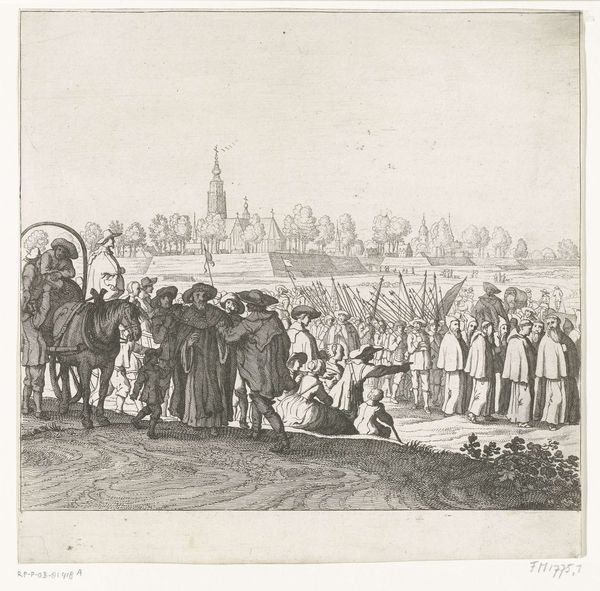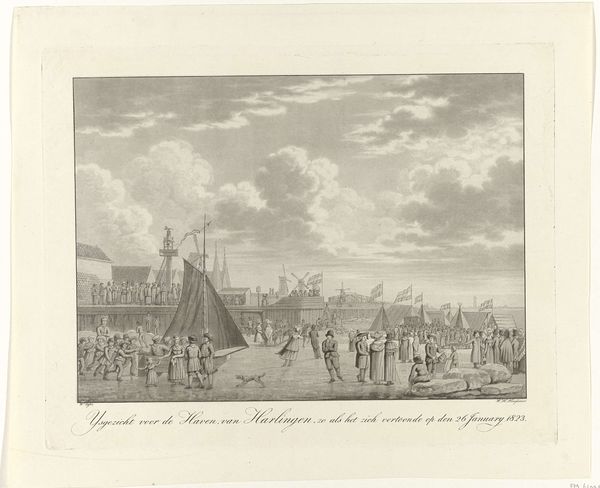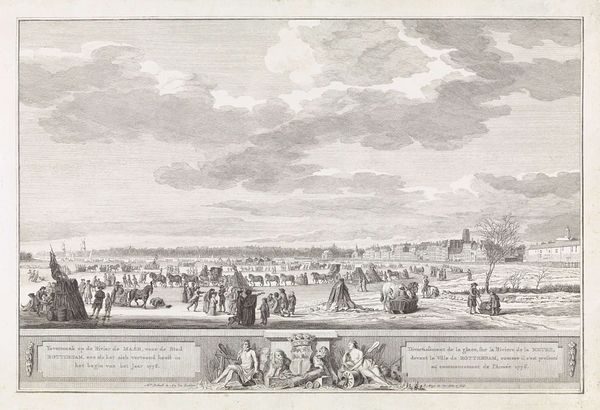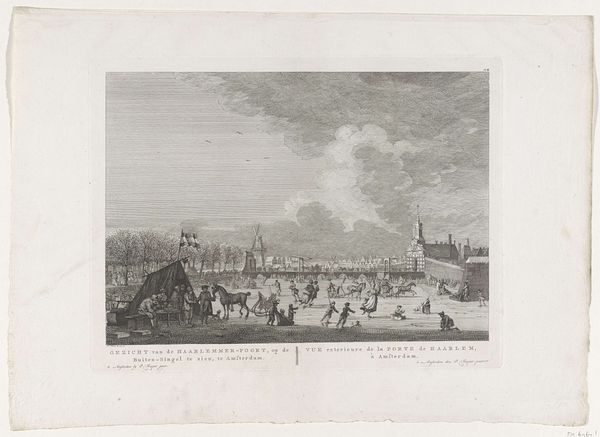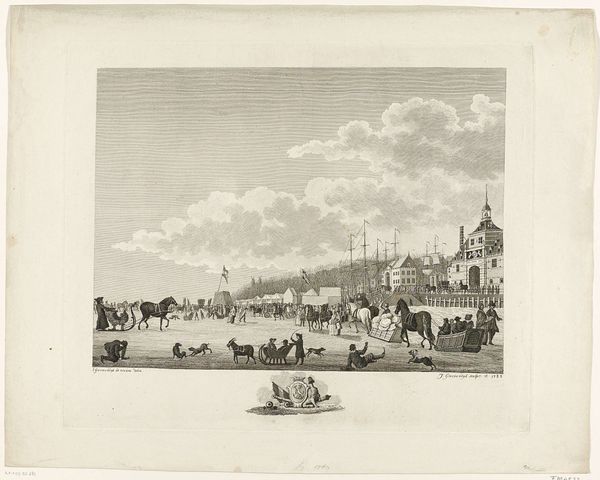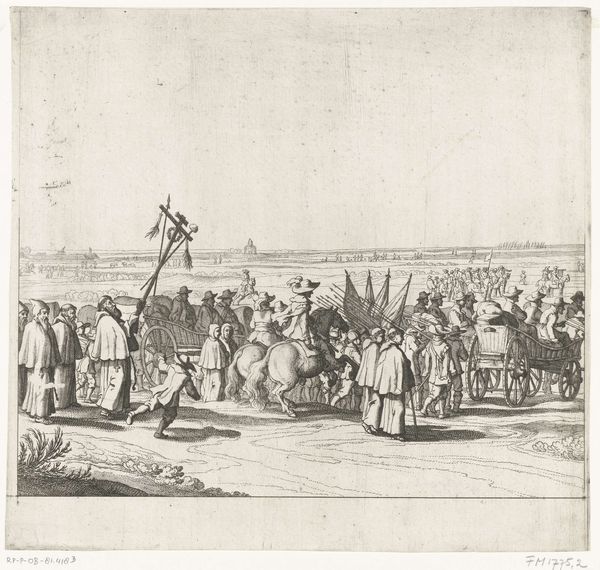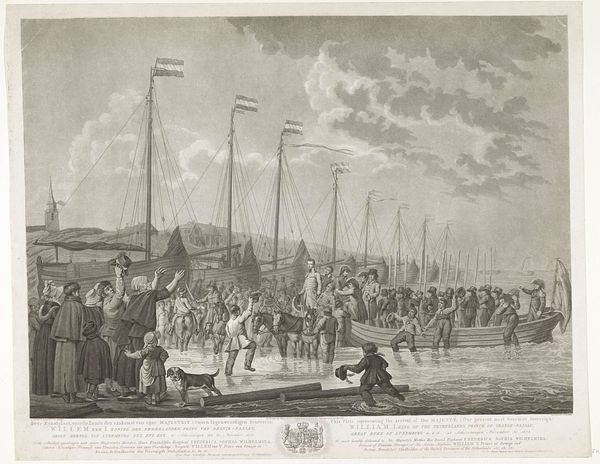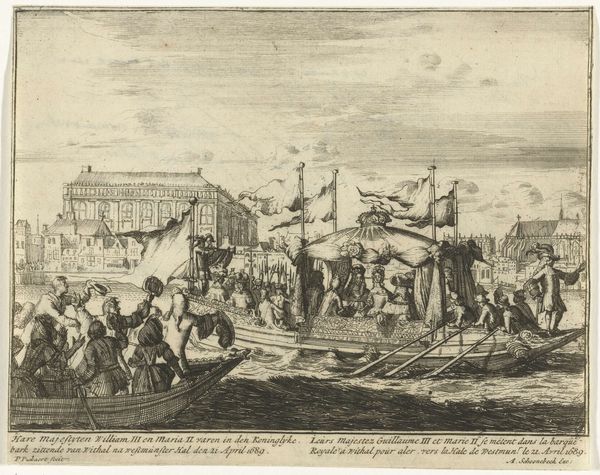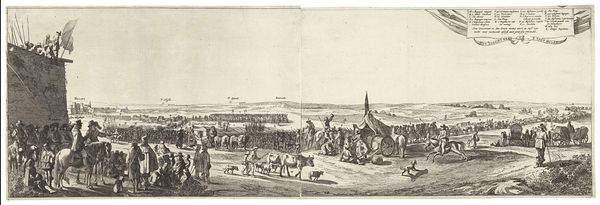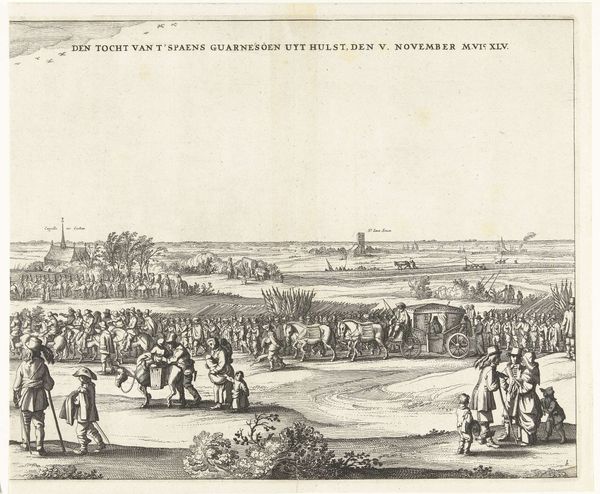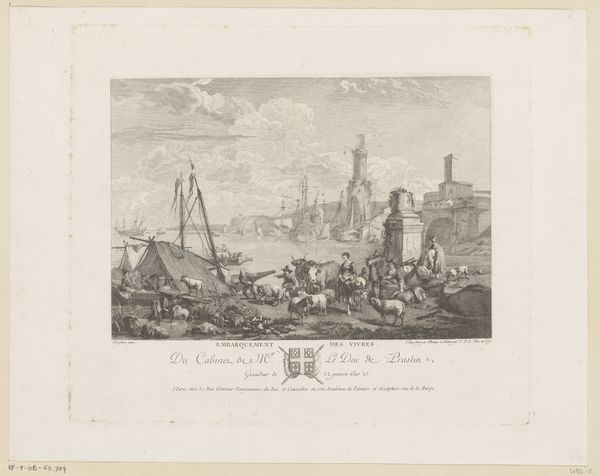
Aankomst van de prins van Oranje te Scheveningen, 1813 1813 - 1814
0:00
0:00
cornelisbogerts
Rijksmuseum
print, engraving
#
neoclacissism
# print
#
old engraving style
#
romanticism
#
cityscape
#
history-painting
#
graphite
#
engraving
Dimensions: height 230 mm, width 310 mm
Copyright: Rijks Museum: Open Domain
Curator: Ah, "Aankomst van de prins van Oranje te Scheveningen, 1813", an engraving by Cornelis Bogerts. The crisp lines, the almost photographic detail... it's striking for its precision, don’t you think? Editor: I do, but it also strikes me as rather…formal. Look at all those tiny people, stiffly arranged on the beach. It feels more like a meticulously staged tableau than a real, spontaneous moment of jubilation. Curator: Well, it does depict a very specific moment: the arrival of Prince William I on Scheveningen beach in November 1813, marking the end of French rule. Contextually, we have to remember this was meant to inspire feelings of national unity. Editor: Right, and engravings like this served as propaganda, disseminating that image of a powerful, legitimate leader widely, which raises questions about who gets to be visible and whose stories are told, and from what perspective. Curator: Yes, these images help in consolidating that political narrative through neoclassicist techniques. The artist seems concerned with conveying a sense of order and purpose. Yet there is a romantic undercurrent, it attempts to capture that emotion as well. Editor: The landscape, in particular, the beach meeting the turbulent sea seems to capture something grander than human politics. There are some dark aspects to it, the artist perhaps did not intend for the image to be perfect. It also reminds me about movements against neocolonialism and how the locals may have perceived it at the time, with feelings other than joy. Curator: I get that. It’s a staged event but there’s an interesting, complex energy at play. What seemed joyous perhaps concealed deeper sociopolitical turmoil and undercurrents, no doubt. Editor: Precisely. Which ultimately challenges the simplicity of historical grand narratives and prompts a critical reevaluation, no? Curator: Indeed! It allows a closer analysis of the values it represents.
Comments
No comments
Be the first to comment and join the conversation on the ultimate creative platform.

